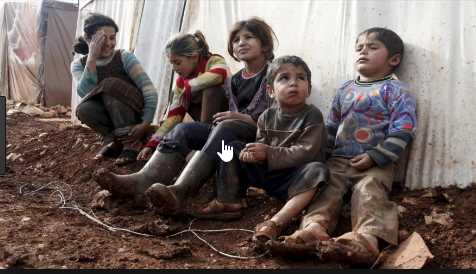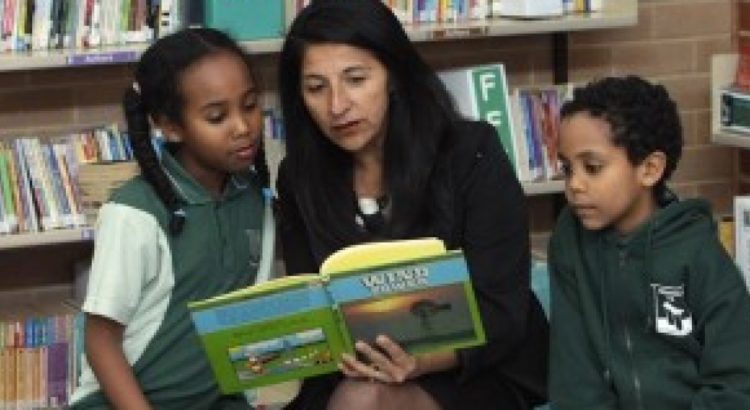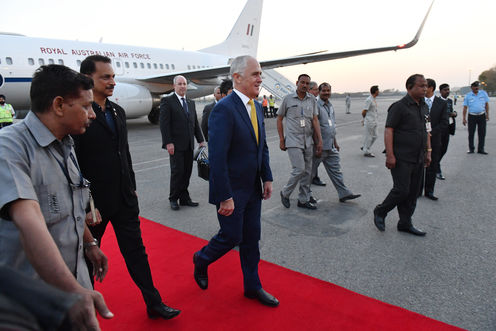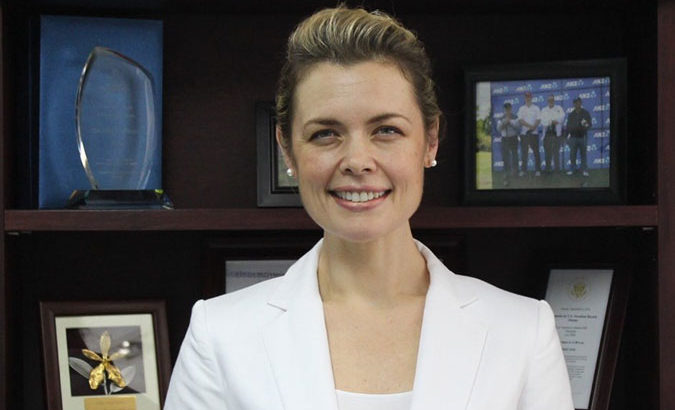Oceanía/Australia/Abril 2017/Reseña/http://www.unwomen.org/
Reseña:
En la entrevista: “Las mujeres en la organización se ven como líderes”. Anna Green ha luchado durante toda su carrera por la igualdad en el trabajo. Ahora, como CEO de ANZ LAO, ella está utilizando principios de empoderamiento de las mujeres (estudiar), una iniciativa de ONU Mujeres y el Pacto Mundial de las Naciones Unidas, para empoderar a otras mujeres y mejorar la diversidad en la organización laboral. En este sentido se le formularon algunas de las interrogantes: ¿Qué obstáculos han encontrado a causa de su género en su vida profesional? ¿Cómo les superar?, ¿Por qué es importante contar con más mujeres en puestos directivos?, La desigualdad de género en el lugar de trabajo es a menudo reforzada por duro para cambiar actitudes. ¿Qué pueden hacer hombres y mujeres en el lugar de trabajo para luchar contra los estereotipos y la discriminación? Por último señalan que en la banca internacional fue reconocida por la ONU como una mujer de inspiración, esto origino asistir a mujeres para el impulso en capacitaciones de liderazgo del gobierno australiano.
Entrevista: Women in the organization view themselves as leaders
Anna Green has fought for equality in the workplace her whole career. Now, as CEO of ANZ Lao, she’s using the Women’s Empowerment Principles (WEPs), an initiative by UN Women and the UN Global Compact, to empower other women and improve diversity in the company.
What barriers have you encountered because of your gender in your professional life? How did you overcome them?
I decided to build my career in two male-dominated industries—banking and law.
When I started practising law there were partners (both women and men) that I worked for who asked me to make them coffee or pick up their dry cleaning, simply because I was a young woman. It was demoralising and disheartening.
However, I also saw many people, again both women and men, who understood the inherent inequality in many of the behaviours and practices of their colleagues and called out inequality in the business environment whenever they saw it.
As I have progressed in my career, I actively sought out people and work environments that promoted gender equality. Sometimes it’s hard to be the whistle-blower, especially when doing so could cost you your job. But the longer I am in business, the more I see the importance of doing just that. If leaders don’t lead by example, then nothing will change.
Why is it important to have more women in senior management?
Men and women have different management styles and perspectives. My own experience has shown that diversity of perspectives and experience at the management table makes for good management and sound decision-making in any organization. If you only surround yourself with people who think like you and have a similar life experience, you are unlikely to make change or embrace change.
Seeing women in leadership roles should be the norm, rather than an exception. Failing to include women at the management table effectively silences the views of women—who are half the world’s population—and doesn’t provide a realistic lens with which we can view the world. Organizations that want to survive and prosper are starting to realize this and are actively recruiting women into management to bridge the gender gap.
How is ANZ bank promoting women’s leadership and what are the main challenges?
The importance of setting targets, gathering data and holding leadership accountable for implementing change cannot be underplayed. At ANZ Lao and ANZ globally, ensuring that our business reflects the people and the communities in which we operate is a key to our success. We understand that by simply calling out the inequality in the work place is not going to change things. Targeted actions are needed.
People, policies and businesses respond to data. Once you can quantify the inequality using reliable statistics, the reality of the situation becomes clearer and undeniable. Thereafter, action can be taken through tangible policies and programmes to remedy the gender imbalance and inequality.
At ANZ in Lao, we have set ourselves a target to make 20 per cent of our supply chain contractors female by next year and we track our progress regularly and hold ourselves accountable to this target. We have implemented paid parental leave going beyond the local regulatory requirements for both men and women and flexible working hours. We have also set up a policy to have at least one female candidate to interview for every management level recruitment. I have seen our staff embrace these changes as the new normal so that we have a gender equal workplace culture.
Gender inequality at the work place is often reinforced by hard-to-change attitudes. What can men and women do in the workplace to combat the stereotypes and discrimination?
In order to combat gender-based discrimination in the workplace, both men and women at work must be more aware of their own gender biases.
Some of the common assumptions that I have come across from colleagues, particularly around recruitment practices include, “women who have children will want to stay at home to look after them or will want to work part time”, “men will be the breadwinners in the family and therefore wouldn’t want to take paternity leave or flexible work arrangements” and “all women will choose to be mothers”.
Confining our workmates to these very narrow definitions of what constitutes “male” or “female” choices with regards to work and life, constrains our ability to think differently about what our workplaces could look like. Understanding that other people’s views do not always align with our own and talking about this openly and honestly ultimately helps to break down discriminatory thought processes in the workplace.
How do the Women’s Empowerment Principles impact everyday life at ANZ?
Since we signed on to the Women’s Empowerment Principles in YEAR, we have implemented the WEPs across 11 banks in Lao. The WEPs have positively impacted ANZ Lao’s policies and practices—from the way we work (flexible working practices), to the way we recruit (gender quotas for interviewees for management roles) and the way we celebrate (annual LGBTI and Women’s Day events).
They have also given us a point from which to advance the conversation within the organization around gender equality in the workplace and following our example, other organizations and programmes in Lao are expressing interest in the WEPs.
But perhaps the most positive impact is seeing the women in the organization view themselves as leaders. Our Head of International Banking was recognized by the UN as a woman of inspiration and several of our senior female managers have been nominated for and received scholarships to attend advance women in leadership trainings by the Australian Government. The entire ANZ Lao women’s leadership team was chosen as a case study for the ASEAN.
Fuente:
http://www.unwomen.org/en/news/stories/2017/2/take-five-anna-green-anz-lao-and-weps
Fuente Imagen:
https://lh3.googleusercontent.com/pxl-yFn51J4-v1BqpXk5YwCFxnKX78hoFKLtPnHUz5oKtQQN58bXbpggy-FSNVpRMh4vzw=s85












 Users Today : 37
Users Today : 37 Total Users : 35459943
Total Users : 35459943 Views Today : 43
Views Today : 43 Total views : 3418508
Total views : 3418508